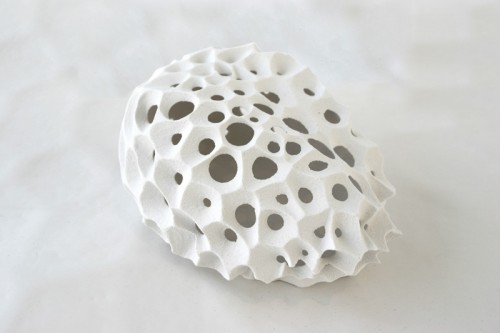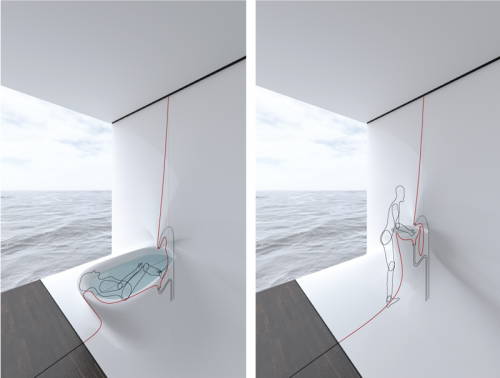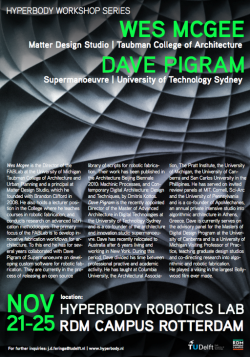 Wes McGee to teach a workshop with Dave Pigram on Robotic Fabrication as part of the Hyperbody Workshop Series at TU Delft.
The workshop with Wes McGee [ matter design studio / Taubmann College of Architecture ] and Dave Pigram [ supermanouvre / university of technology sydney] explores the idea of funicular structures coupled with the robotic hotwire cutting process. Hotwire cutting is a highly effective and relatively novel approach to the production of volume and is highly effective in the production of volumetric elements of EPS foam. The workshop explores the potential of EPS formwork while revisiting the idea of half-timber structures. Part of the formwork will be come structural, part of it remains within the structure, part of the formwork will be disposed off / recycled.
Wes McGee to teach a workshop with Dave Pigram on Robotic Fabrication as part of the Hyperbody Workshop Series at TU Delft.
The workshop with Wes McGee [ matter design studio / Taubmann College of Architecture ] and Dave Pigram [ supermanouvre / university of technology sydney] explores the idea of funicular structures coupled with the robotic hotwire cutting process. Hotwire cutting is a highly effective and relatively novel approach to the production of volume and is highly effective in the production of volumetric elements of EPS foam. The workshop explores the potential of EPS formwork while revisiting the idea of half-timber structures. Part of the formwork will be come structural, part of it remains within the structure, part of the formwork will be disposed off / recycled.
The workshop is open to a limited number of external students at a reasonable fee of €150, including workshop materials.

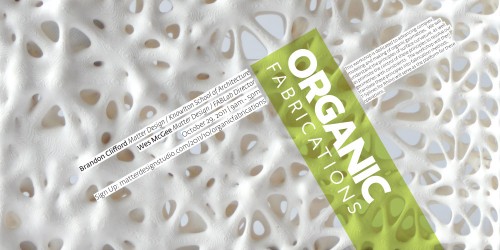
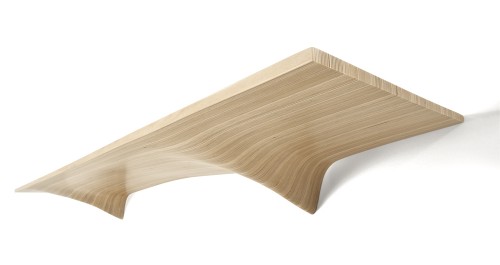

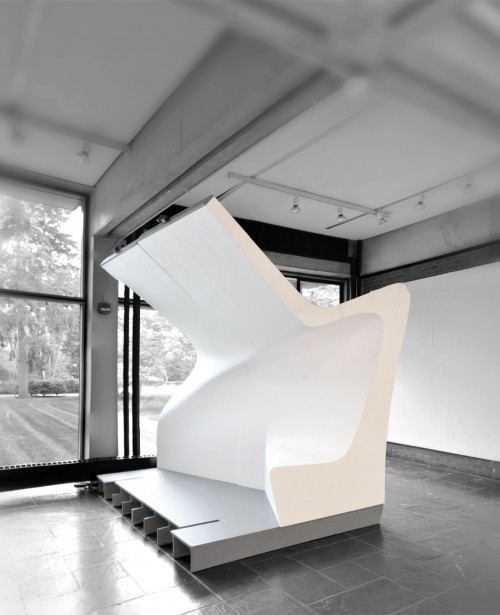
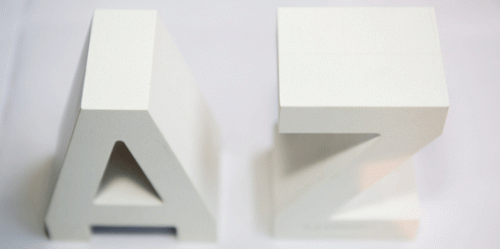
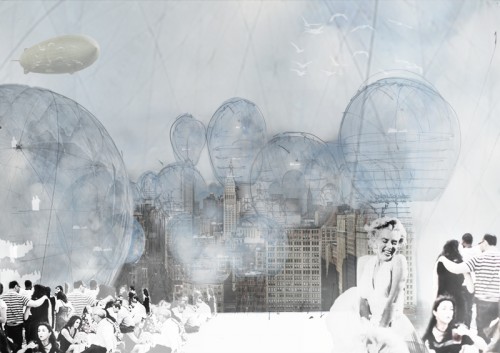
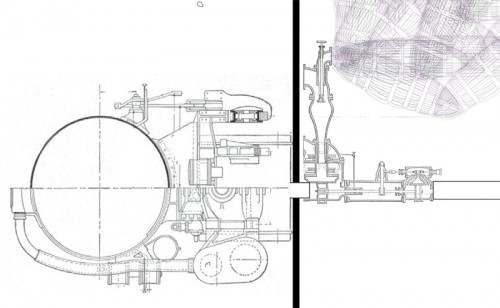
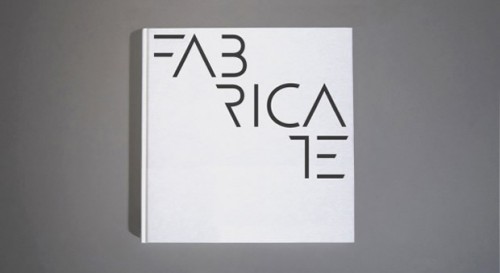
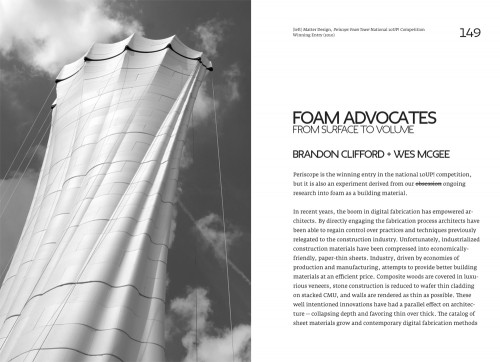
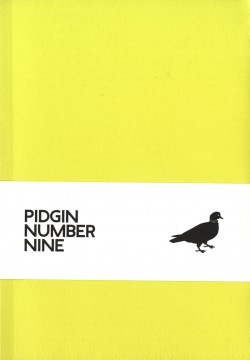
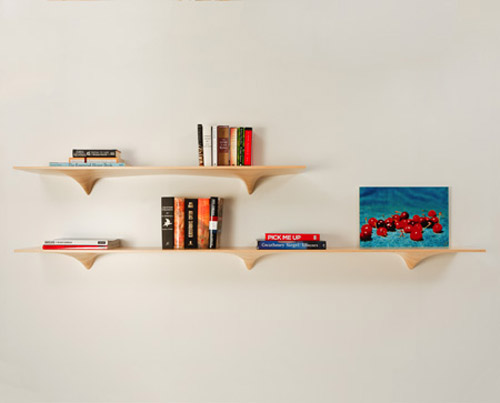
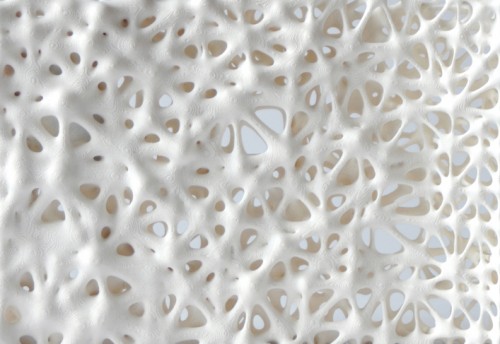
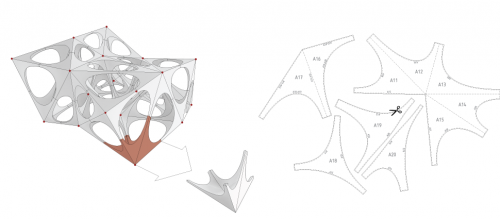
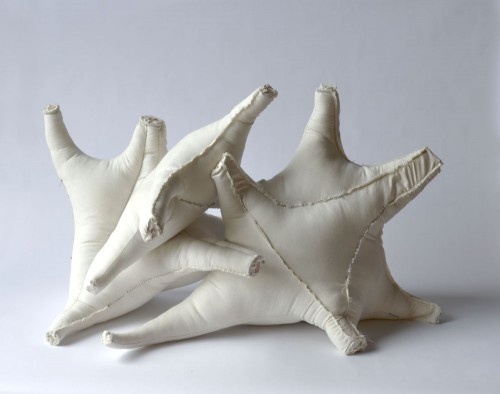
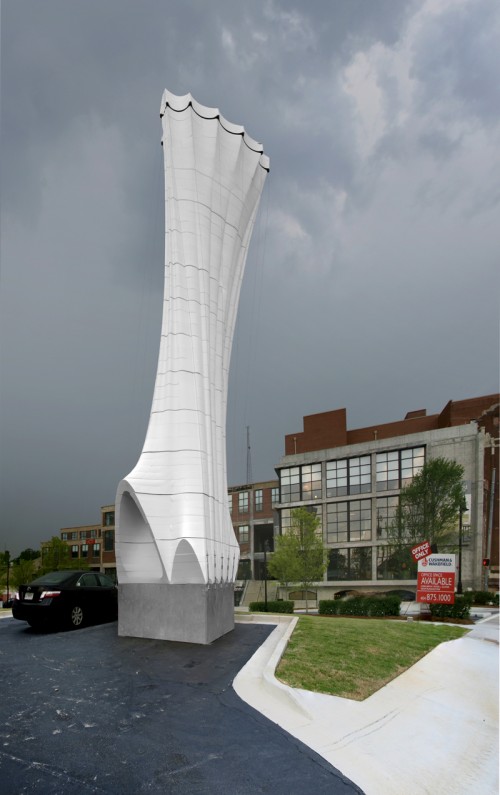
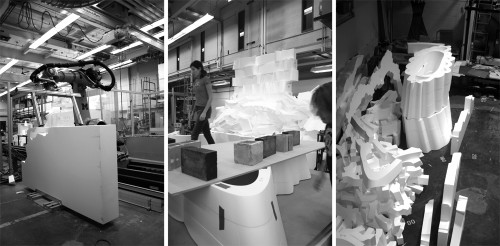
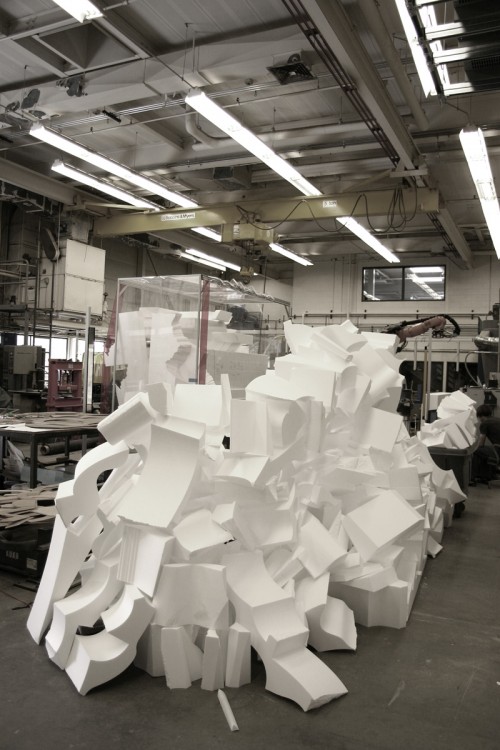
 Matter is proud to announce the
Matter is proud to announce the 